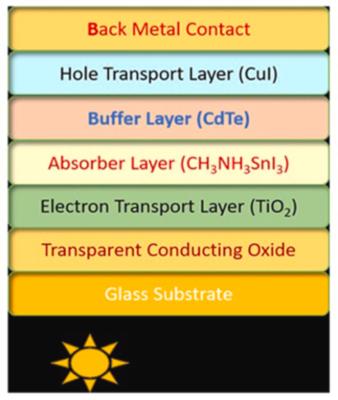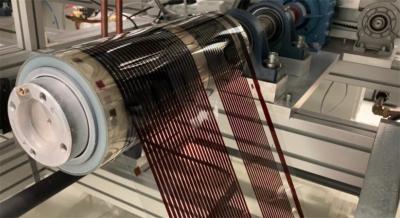Researchers use a cadmium telluride buffer layer to improve perovskite solar cell performance
Researchers from Pakistan's University of Agriculture Faisalabad, University College of London United Kingdom and The National University of Malaysia have conducted a series of simulations to investigate how a cadmium telluride buffer layer (BL) may help increase efficiency and stability in perovskite solar cells. Their experiment showed that cell efficiency may climb from 11.09% to 23.56%.
Solar cell architecture with BL. Image credit: Results in Engineering
The researchers explained that the presence of a BL in a perovskite cell offers a porous structure that aids in forming the upper hole-transporting layer (HTL), while also preventing the leakage of corrosive additives from the HTL material. “The improvement in the development of HTM layer not only promotes efficient hole transfer and conduction but also restricts charge recombination,” they explained.





